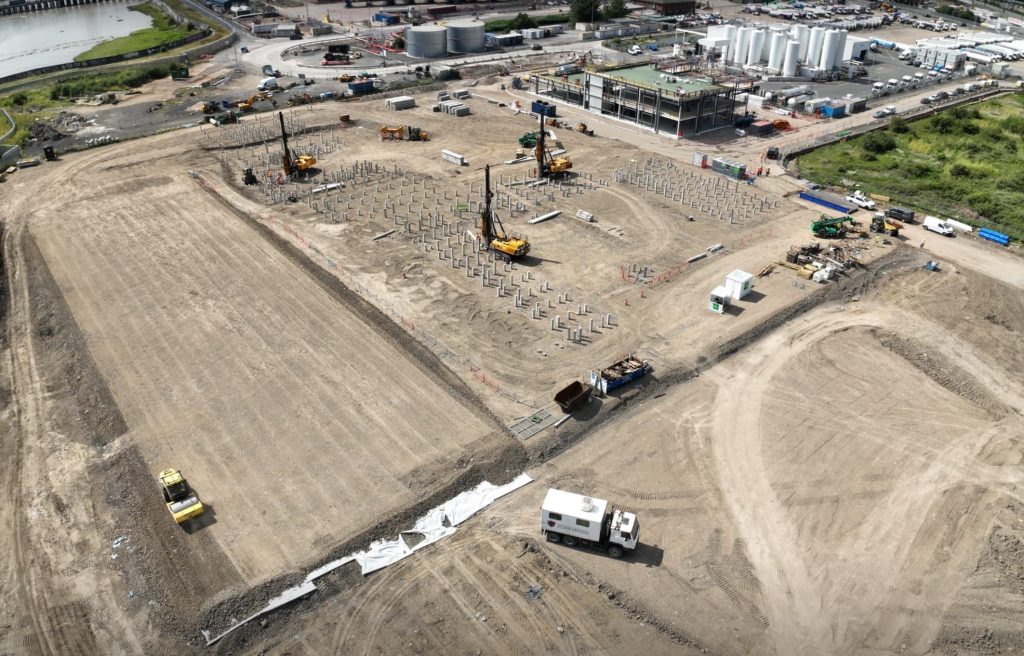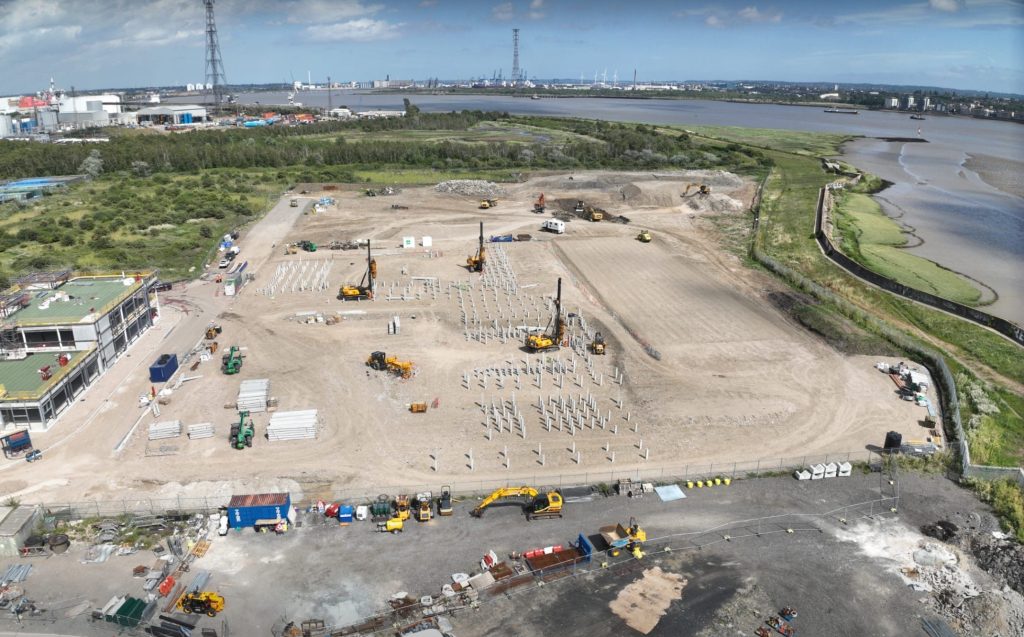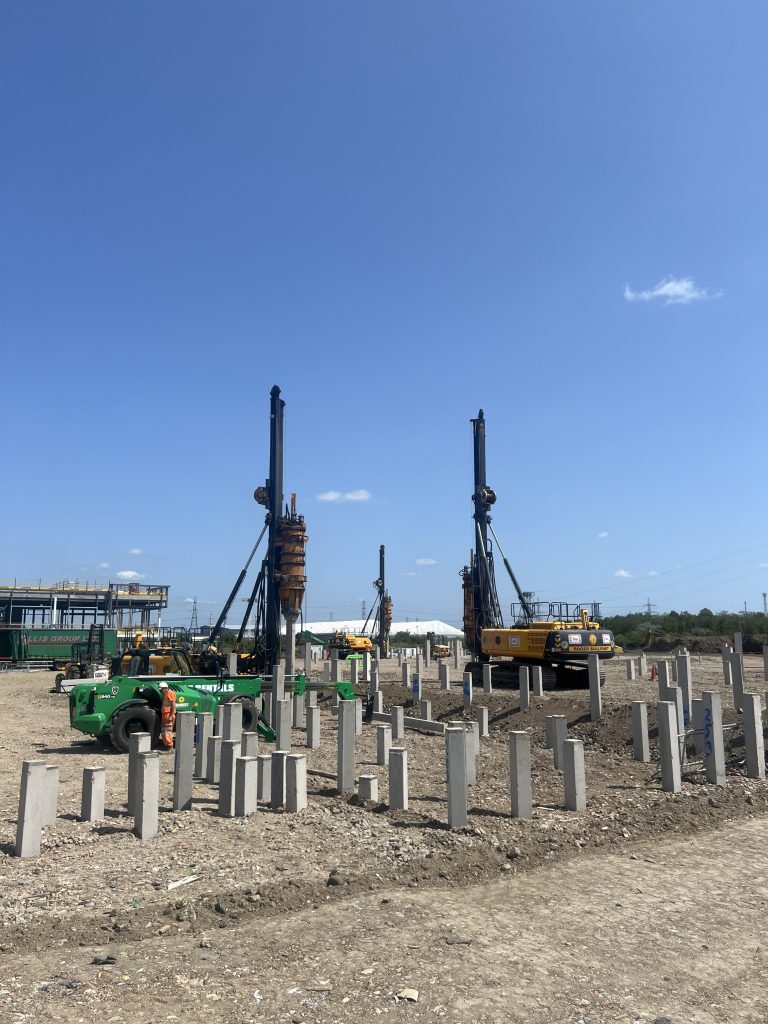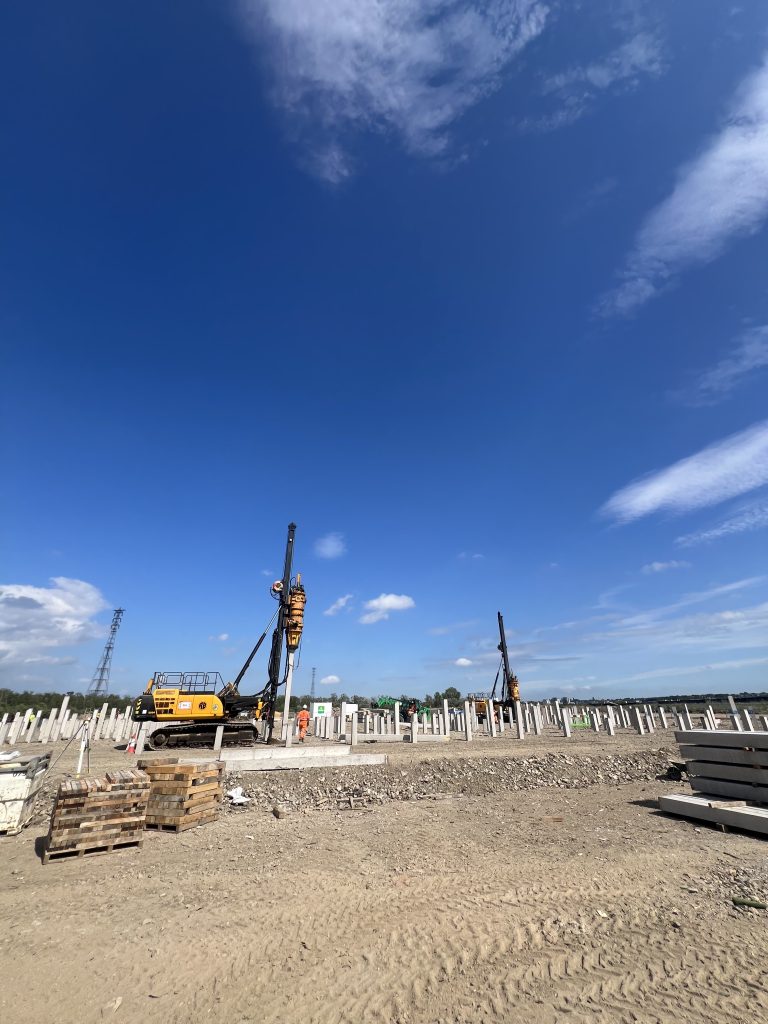PROJECT BRIEF
In 2024, VINCI Building collaborated closely with Roger Bullivant Limited’s (RBL) team to develop and implement a piling solution for a new asphalt plant and associated infrastructure in Grays, Essex, for Eurovia UK. The development included aggregate storage bays, hoppers, tanks, and weighbridges. Drawing upon extensive local knowledge and regional experience, RBL proposed a solution based on 250mm sq. Driven Precast Concrete Piles, a method previously proven effective in nearby projects with similar ground conditions.
This early-stage collaboration enabled a data-driven approach that optimised both time and material use. The site was characterised by soft tidal deposits over river terrace gravels and chalk, requiring careful engineering to ensure pile performance and stability. The tight construction timeline, driven by scheduled plant delivery, added further urgency and complexity to the project.
KEY ISSUES
Challenging Ground Conditions: Soft tidal deposits overlaying gravels and chalk demanded careful selection and validation of piling solutions. Piles needed to penetrate through the gravels and into the chalk for optimal load-bearing capacity.
Data Limitations: Initial soil data was insufficient for a finalised design. Theoretical design methods in chalk produced a conservative design, piles could be significantly over-designed if basing on theory alone based on previous local projects.
Time Constraints: A compressed project schedule required rapid mobilisation, efficient execution, and a highly reliable supply chain to keep the build on track.
Sustainability and Compliance: The solution needed to meet strict environmental and durability requirements, including a 50-year design life and adherence to Eurocode.
Design Complexity: The piles were required to support varying loads up to 656kN DA1C1 in compression and 23kN DA1C1 in horizontal loading while factoring in raised site levels and the potential for negative skin friction.
SOLUTION
- Early Collaboration and Proactive Design Input: RBL was involved from the outset, working closely with VINCI Building and the design engineers. This enabled a proactive, data-driven approach to the piling scheme and ensured the right solution was developed early in the project.
- Tailored Site Investigation Programme: The RBL team advised on and supported a bespoke site investigation plan focused on verifying chalk layer coverage. This provided the necessary ground data to determine accurate pile lengths and reduce risk during design and installation.
- Preliminary Pile Testing to Validate Performance: Based on previous experience in the region, RBL proposed early pile testing to compare actual pile behaviour against theoretical models. The testing confirmed higher-than-expected capacities in chalk, supporting a more economical design.
- Optimised Pile Design Using Local Ground Knowledge: Using both test results and regional expertise, RBL optimised the design to use 250mm sq. Driven Precast Concrete Piles, reducing material usage while maintaining performance and safety standards.
- Consideration of Site Level Changes and Skin Friction: Raised site levels were factored into the pile performance assessments. RBL accounted for negative skin friction in the design, ensuring long-term performance and compliance with Eurocode requirements.
- Compliance with Industry Standards: Final designs adhered to Eurocode specifications and BS 8500-1 (2015), incorporating concrete classification DC4 and meeting the required 50-year design life.
- Efficient Mobilisation and Material Supply: To meet tight deadlines, RBL mobilised three 5000-series quiet hammer piling rigs simultaneously and arranged for early delivery and on-site stockpiling of low carbon precast concrete pile sections from their precast manufacturing facility in Derbyshire to prevent supply interruptions. Over 2300 no. piles were installed, an average of 24.7m driven length.
- Early involvement in the design process with VINCI Building and preliminary testing provided the opportunity to contribute to our Group sustainability targets minimising waste using precast piles to the most efficient design, incorporating low carbon concrete. Close cooperation and an excellent working relationship between the site teams, optimised deliveries and minimised transport movements, and the incorporation of alternative fuels for all site activities again contributed to our overall net savings.





